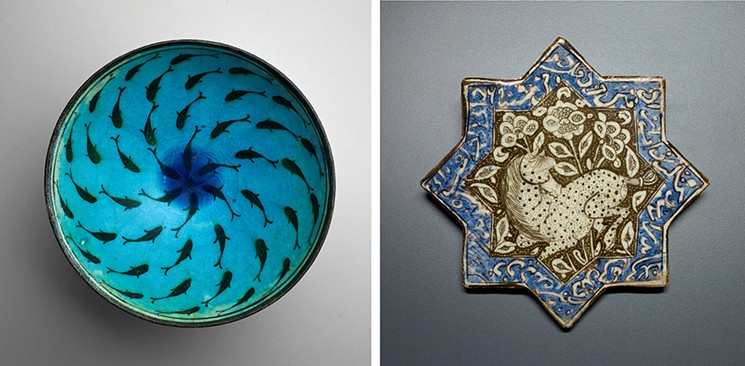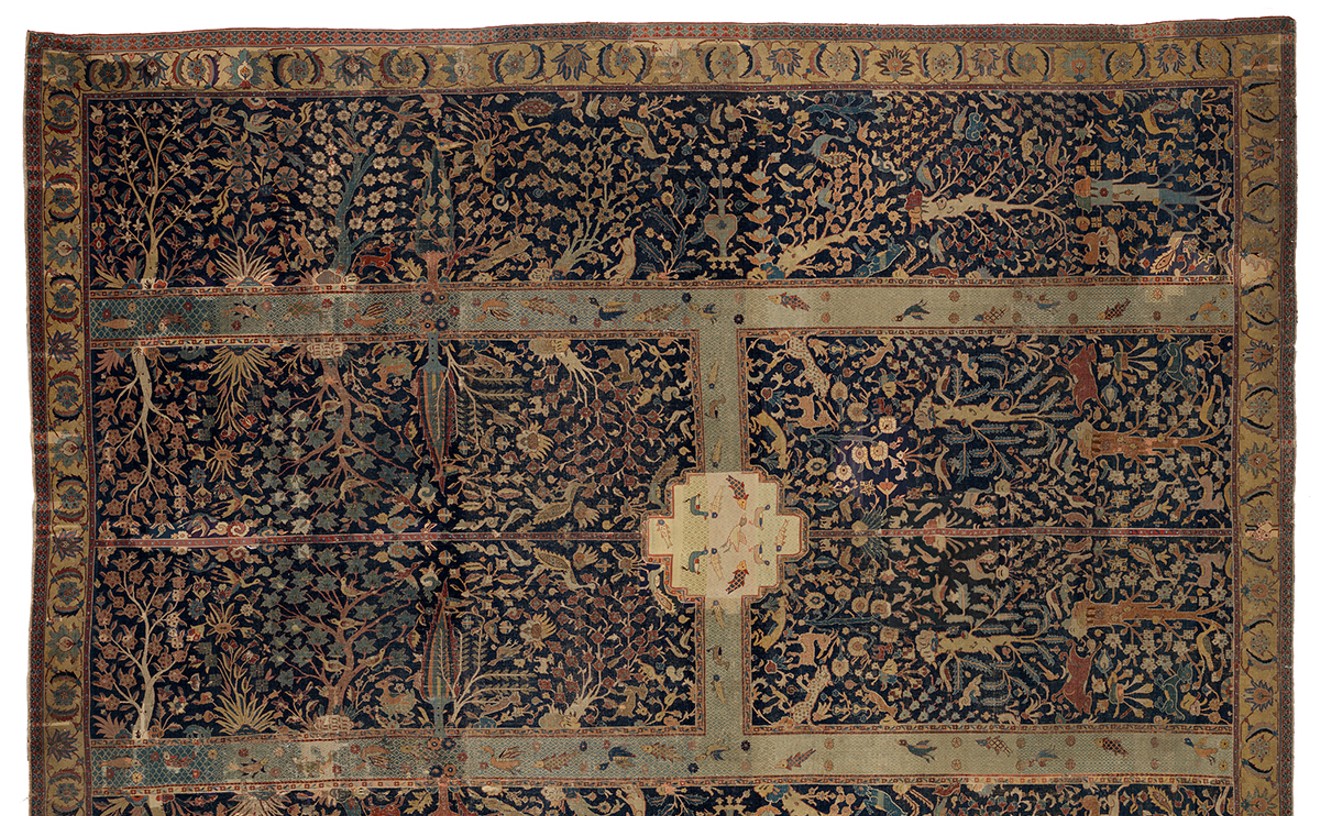It's the jewel in the crown in the just opened exhibit at MFAH, "Garden Paradise: The Magnificent Safavid Carpet from the Burrell Collection, Glasgow." We know that Scottish collector Sir William Burrell purchased it from the Royal Bank of Scotland in 1939 and displayed it in his drawing room at Hutton Castle near Berwick-upon-Tweed, Northumberland. After his death in 1958 the carpet was gifted, along with 9,000 works (predominantly Islamic, Chinese and medieval), to the people of Glasgow, who in turn built the Burrell Collection. The carpet spent three months at New York's Metropolitan Museum of Art before making its way to Houston.
It is unique in that it doesn't follow the normal design of having criss-crossing water channels that form four gardens, or chahar bagh. Exotic fish and ducks swim in the "H" shaped channels of water, with the water rendered in a blue lattice or diamond pattern. It illustrates eternal springtime and is teeming with life: plants, butterflies, mythological beasts and animals engaged in hunt and play.
To create an intricate carpet with straight lines is task enough, but this elaborate carpet is full of all sorts of curves and rounded shapes, making the design all that more difficult to execute. Each color change called for the knotting of a different colored thread, an infinitely slow and laborious technique that yielded slightly imperfect edges but an exquisite finished product. There are 224 asymmetrical knots per square inch and the carpet measures a little more than 170 inches by 209 inches, making a project like this the non-digital precursor to modern-day programming.

(L) Bowl with Fish, Iran, probably Kashan, late 13th– mid-14th century; and (R) Star Tile, Iran, Kashan or Takht-i Sulayman, late 13th century; both from the Hossein Afshar Collection at the Museum of Fine Arts, Houston.
Photos courtesy of the Museum of Fine Arts, Houston
Aimée Froom, curator of arts of the Islamic worlds at the MFAH, had the difficult but enviable job of selecting flora and fauna themed objects from the Hossein Afshar Collection, and her choices yield more than a few surprises. Most exciting is perhaps a massive book titled A History of Oriental Carpets Before 1800, coming in at a whopping 26 inches by 20 inches and containing photos of the very same Wagner Carpet.
Many of the objects are small in scale and are illustrated with the finest of strokes in gold, ink, watercolor and silver (which often has been oxidized to black). There are a few functional pieces, such as a mirror case, bowls and a hookah, while other objects are ornamental, including a 19th century black pear crafted from steel with a restrained gold design.
The late 13th century Star Tile (shown above) is meant to alternate with cross-shaped tiles and would have been part of a wall or floor design.
"Garden Paradise" is a smaller exhibit, set on the first floor of the Audrey Jones Beck Building, and offers a creative and fascinating next chapter in MFAH's ongoing relationship with the private collector Afshar.
"Garden Paradise: The Magnificent Safavid Carpet from the Burrell Collection, Glasgow" continues through March 24, 2019; open 10 a.m. to 5 p.m. Tuesdays and Wednesdays, 10 a.m. to 9 p.m. Thursdays, 10 a.m. to 7 p.m. Fridays and Saturdays, 12:15 to 7 p.m. Sundays, Museum of Fine Arts, Houston, Audrey Jones Beck Building, 5601 Main, 713-639-7300, mfah.org, free to $15.
Visit mfah.org/calendar for related programming, including a paper cutting workshop, lectures, a writing series and family events.


